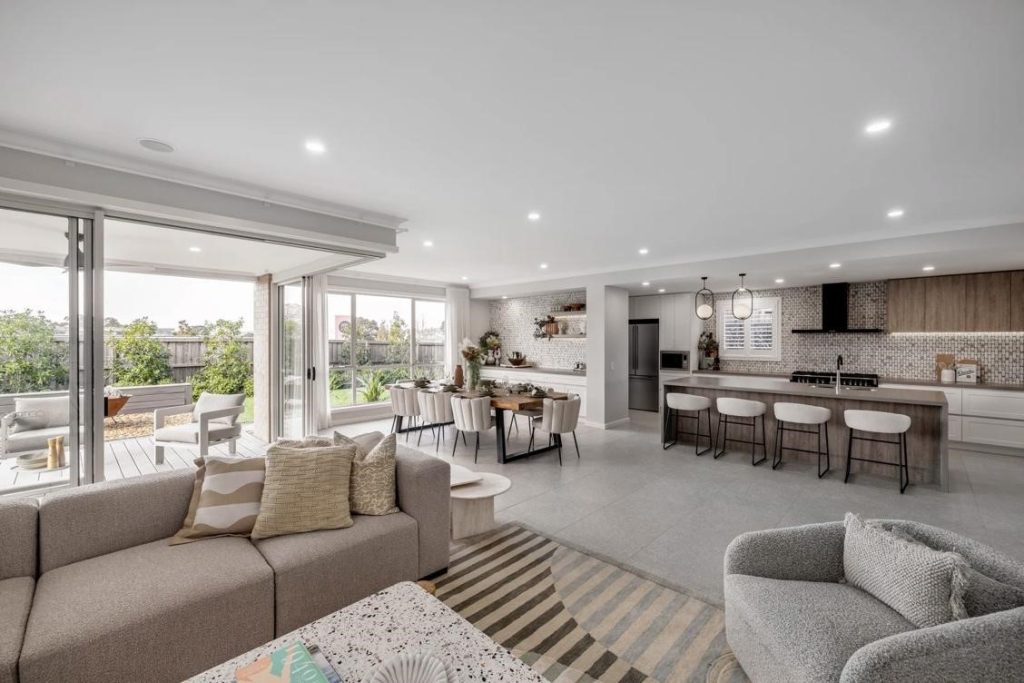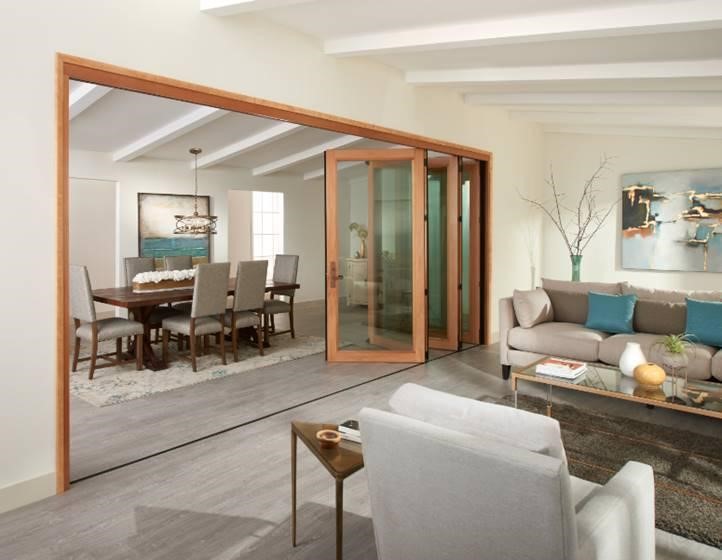DESIGNING FOR MULTIGENERATIONAL LIVING

The bonds within families have a significant impact on interior architecture, as seen in the increasing popularity of multigenerational living- a trend driven by factors such as the rising cost of living, the growing need for elderly care, and the desire for financial stability. This living arrangement not only facilitates shared expenses and caregiving responsibilities but also fosters stronger familial connections.
Designing a home to accommodate multiple generations necessitates thorough planning and consideration. Let’s delve deeper into key considerations:
1. Shared Common Spaces: Central to multigenerational living is the creation of communal areas where family members can come together, socialise, and engage in activities. Like in the picture above, designing inviting spaces such as a well-furnished living room, a spacious kitchen and an outdoor gathering spot encourages interaction and strengthens familial bonds. With an open floor plan concept, ample seating, comfortable furniture and adequate space for various activities, a sense of togetherness and belonging is most likely to be fostered.
2. Accessibility: Creating an inclusive environment that caters to the needs of all family members, particularly older adults, or individuals with mobility challenges, is essential. Widening doorways, installing ramps, and opting for lever-style handles facilitate ease of movement and accessibility throughout the home. These adjustments not only enhance physical accessibility but also promote inclusivity and comfort for everyone.

3. Privacy and Independence: Recognizing the individuality of each family member is paramount. Therefore, allocating separate spaces or mini apartments within the home ensures privacy and independence. Additionally, incorporating soundproofing techniques and providing separate entrances can further enhance autonomy, allowing family members to retreat and unwind when needed.
4. Safety and Comfort: Prioritising the safety and comfort of all family members is paramount. Implementing features such as non-slip flooring, sufficient lighting, and safety bars in bathrooms enhances safety and reduces the risk of accidents, particularly for older adults. Additionally, incorporating elements of comfort, such as cosy seating areas and climate control systems, contributes to a welcoming and nurturing environment for all occupants.

5. Communication and Input: Involving all family members in the design process is crucial for creating a home that meets everyone’s needs and preferences. Encouraging open communication and collaborative decision-making ensures that the design reflects the diverse perspectives and requirements of each generation. This fosters a sense of ownership and investment in the home, leading to greater satisfaction and harmony among family members.
6. Flexibility and Adaptability: Anticipating and accommodating future changes in family dynamics is essential for long-term satisfaction and functionality. Designing with flexibility in mind, such as incorporating modular furniture and flexible room configurations, allows for easy adaptation to evolving needs- read our previous article on Innovations in Furniture Design for Interior Spaces. By incorporating sliding or folding partitions, you can easily divide or merge spaces as needed. Multipurpose spaces that can serve different functions over time provide versatility and optimise the use of space, ensuring that the home remains relevant and functional for years to come. For example, a guest room can double as a home office or a playroom.

7. Integrating Technology: Embracing smart home technology can enhance convenience, safety, and comfort for all family members. For older adults, features such as motion sensor lighting, smart locks, and video doorbells offer increased security and ease of use. For younger generations, designated tech-friendly spaces equipped with ample outlets and charging stations cater to their digital lifestyles while promoting balance and moderation in technology use.
In summary, designing a home for multigenerational living requires a thoughtful approach that prioritises inclusivity, functionality, and aesthetics. By considering the unique needs and preferences of each family member and incorporating principles of accessibility, flexibility, and communication, a harmonious living environment can be created where cherished memories are made and familial bonds are strengthened.
Related Posts

- admin
- July 29, 2024
THE ROLE OF TEXTILES IN INTERIOR DESIGN AND DECOR (PART ONE)
THE ROLE OF TEXTILES IN INTERIOR DESIGN AND DECOR (PART ONE) Choosing the right interior design ..

- admin
- October 8, 2024
THE ROLE OF TEXTILES IN INTERIOR DESIGN AND DECOR (PART TWO)
THE ROLE OF TEXTILES IN INTERIOR DESIGN AND DECOR (PART TWO) Here are some ways in which textil ..













